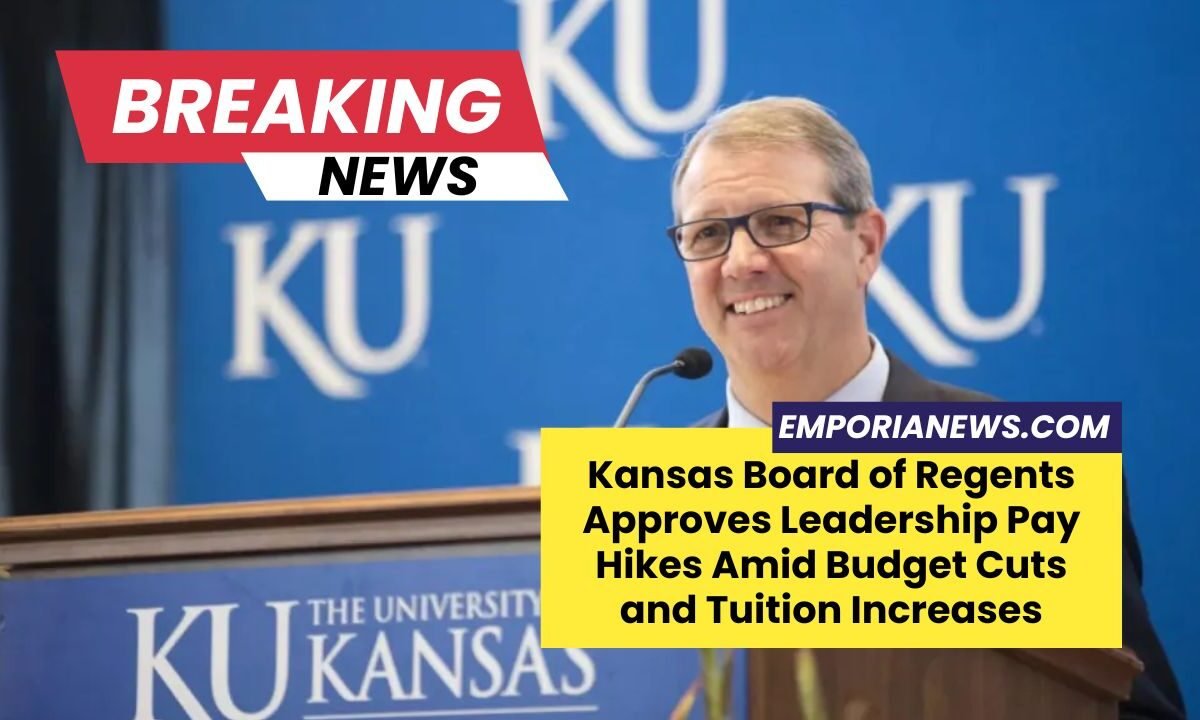In a move aimed at recognizing the contributions of university leadership while maintaining competitiveness, the Kansas Board of Regents unanimously approved salary increases ranging from 4% to 12% for the presidents of five public universities and the Board’s own president.
The decision was made during a special meeting held on Friday via Zoom.
These raises come at a time when many Kansas universities are grappling with shrinking budgets, increasing tuition rates, and a host of financial pressures due to projected enrollment declines and stagnant funding streams.
Financial Challenges Facing Kansas Universities
Regents institutions are currently navigating a complex financial landscape. Among the primary challenges are:
- Flat state and federal funding levels
- Fluctuating federal research investments
- A significant decline in international student enrollment
- A recent revenue-sharing model that allocates $20.5 million annually to compensate student-athletes
These financial constraints have forced several institutions to implement cost-cutting measures. Notably, Emporia State University underwent substantial program reductions and laid off tenured faculty members in response to what administrators described as a looming financial crisis.
Chancellor Doug Girod Receives the Largest Salary Increase
The most substantial pay increase was granted to University of Kansas Chancellor Doug Girod, whose salary rose by 12%, climbing from $695,000 to $800,000 annually.
When factoring in additional private funding from foundations and donors, Girod’s total compensation package now totals $1 million per year, according to data from the Regents.
Breakdown of Salary Increases for University Presidents
Here is a detailed summary of the approved salary hikes for other university leaders:
- Kansas State University President Richard Linton: Received a 5% raise, increasing his salary from $588,000 to $625,000. His total annual compensation now stands at $750,000.
- Wichita State University President Rick Muma: Granted a 4% raise, with his salary moving from $520,000 to $545,000. His overall compensation is now $635,000 annually.
- Fort Hays State University President Tisa Mason: Awarded a 7% raise, boosting her salary from $331,000 to $355,000, with the total compensation equating to the same amount.
- Emporia State University President Ken Hush: Approved for a 4% raise, increasing his salary from $301,000 to $315,000. His total pay now amounts to $370,000 annually.
- Kansas Board of Regents President Blake Flanders: Received a 5% increase, raising his salary from $294,000 to $309,000.
It is important to note that Pittsburg State University President Thomas Newsom, who was appointed earlier this month, is not included in the current round of pay adjustments.
Why the Pay Raises Were Deemed Necessary
Carl Ice, Chairman of the Kansas Board of Regents, emphasized the importance of leadership in shaping the direction and success of higher education institutions.
“Leaders matter. They set compelling visions and inspire teams to contribute their unique talents,” Ice remarked during the meeting.
Ice also highlighted that the Regents had previously commissioned a consultant to assess executive pay across the state’s six public universities.
The goal was to evaluate market competitiveness and ensure Kansas institutions could attract and retain top-tier talent.
This review involved comparing leadership salaries in Kansas with those in other states and similar educational systems.
Looking Ahead: Leadership as a Strategic Investment
Chairman Ice concluded that these pay raises are part of a broader effort to support long-term strategic leadership in Kansas higher education. He noted:
“This is important work that lays a foundation not only for current leaders but for future university presidents and executives as well.”
The Kansas Board of Regents’ recent approval of pay raises for university leaders underscores the board’s commitment to retaining high-caliber leadership amid financial uncertainty.
While universities continue to face budget reductions, rising tuition costs, and federal funding challenges, the investment in leadership is seen as critical to sustaining institutional growth and navigating future pressures.
As the higher education sector in Kansas continues to evolve, these changes reflect a strategic emphasis on visionary guidance and long-term planning.




